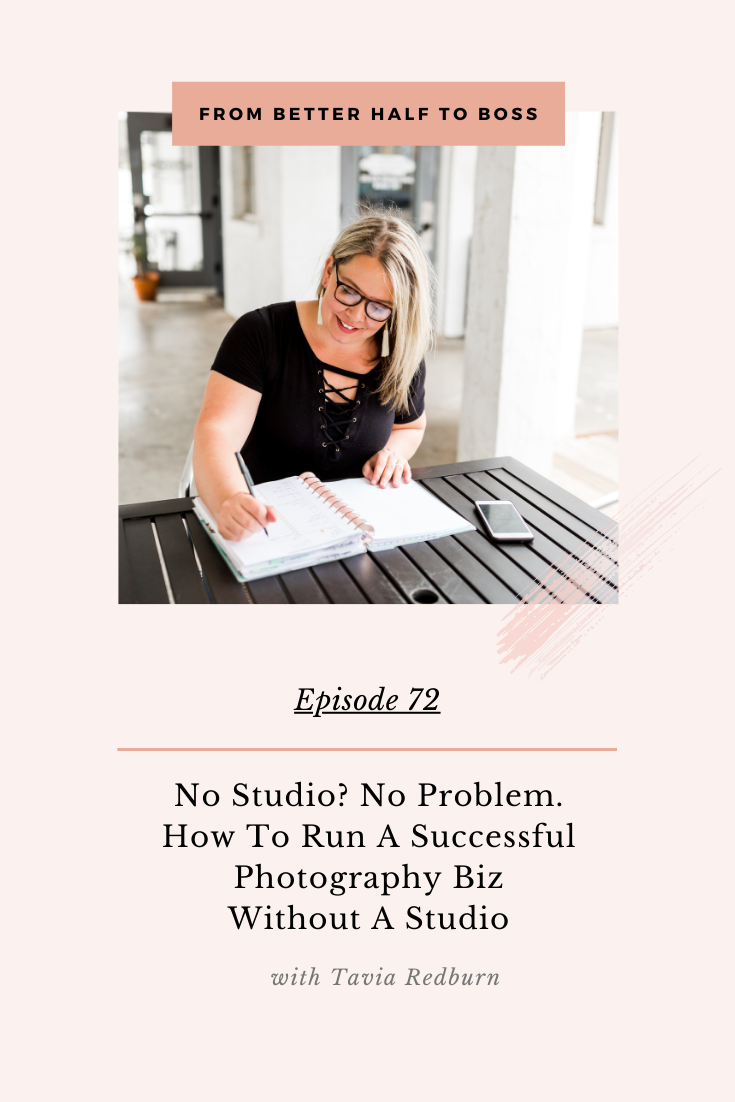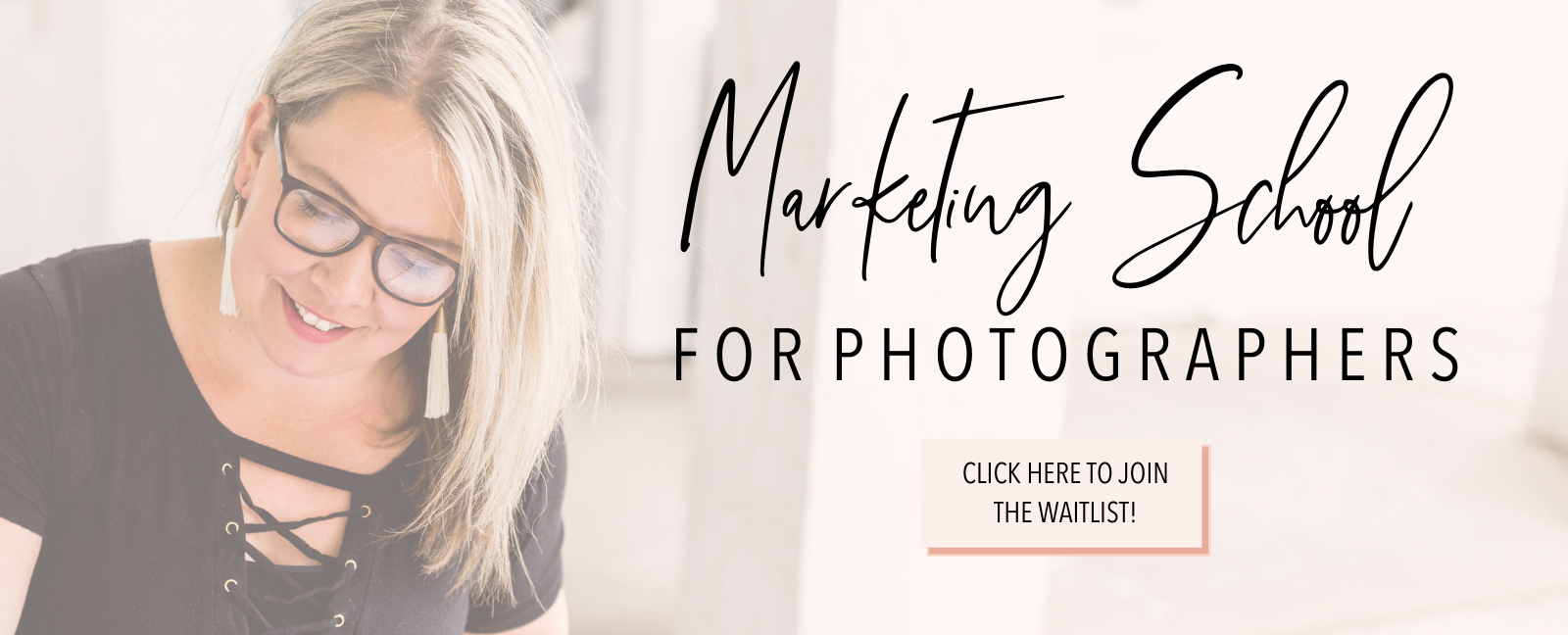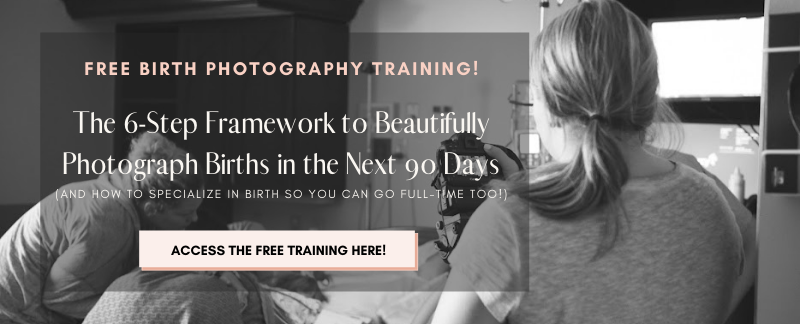
I don’t know if you also feel this way, but I used to think people who had a studio were really professional and that if I wanted to be professional or perceived a certain way, I needed to have a photography studio. I dreamed of having a downtown studio with a brick sidewalk in front of it and big glass windows with my logo on them.
Basically, I thought, in order to be a legit big-time photographer…you have to have a studio.
What ended up happening for me is a little bit different from what I thought it would be: I joined a birth collective created by a local doula friend in 2014, where I got a studio space in the back of their collective space. It was relatively inexpensive because I was sharing the rent with multiple people. But it was definitely not my dream. It was located in the back of an alley. It was good-sized, but the windows are tiny. We had to learn how to use studio lights because there was definitely no room for natural light. It wasn’t exactly what I imagined, but that is what I was very thankful to have at that time.
After 3 and a half years, my priorities shifted and I decided to move to a studio much closer to my house. I shared my studio with another photographer for the reason that I don’t really need my own personal space since I usually just shoot 2-5 sessions a week. That’s a little bit of my journey. The space that I have now is much closer to what my original dream was – it’s a store-front space with big windows, right off of a major road, has a big parking lot in front – a lot of the things that I had hoped for!
I know we’re talking about how to be successful without a studio in this episode, but because I myself chose to open a studio I want to talk about some of the ways my business has benefitted by having a studio.
Benefits of Having A Studio Space
1. Renting It Out (aka more revenue)
This is when you either rent out your studio hourly or bring on a partner (or two) to share in some of the expenses:
Bringing On a Partner (or two)
The start up costs associated with not only paying rent but furnishing an entire studio can get quite expensive. Think: lighting, furniture, usually first and last month’s rent, utilities and deposits, decor, rugs, shelving, displays, samples, etc. But when you share this expense, it makes it much more manageable.
Renting Hourly
Because these expenses can add up, very few photographers have a studio space. If you do have one though, you could rent it hourly to either cover your expenses or even make a profit.
2. Keep Your Stuff in 1 Place
For years, I traveled to client’s homes for their sessions. I’d bring backdrops and props and even sometimes lighting. It’s a lot of stuff to keep up with and take up space in your own home or garage. Having a studio with a place to keep your props is really helpful when creating that life/work balance.
3. Hanging Artwork for Clients to See
And this is definitely one of the most profitable benefits to having a studio! The different products that we offer are already there and makes it easy to show our clients what we have and talk about them.
4. Consistency in my Work
This was a big reason I wanted a studio because when you’re going into someone’s home, you don’t know what the lighting situation will be like. So, I have a lot more creative control in a studio environment
Misconceptions that Photographers Have About Having a Studio
The biggest one I hear is that have a studio will bring you business and clients, whether that is from drive-by traffic or somehow “legitimizing” your business.
The property owner of one of the studios that I had before was super excited about this for me too. But the truth is it’s rare that somebody’s gonna drive by a photography studio. So I wasn’t even considering it to be a benefit at all.
You’re not a new restaurant, you appeal to a very specific demographic. And while it will likely increase your brand visibility, don’t think that just having a studio is going to bring you clients.
I’ve had exactly 0 clients as a result of my store-front studio. People don’t walk by or drive by and book me — they just don’t. My clients come from the brand I’ve build, client referrals, vendor referrals, social media and SEO!
How to be Successful Without a Studio
1. Broadcast the fact that you can serve clients anywhere
Meaning: your studio location is less of a factor on whether or not they’ll hire you! You come to them. They don’t have to travel. This can be especially awesome for new moms. Promote that fact that you’ll come to them as a HUGE benefit, because it really is!
DO:
- Share the benefits of this on your website, in your social media captions, and your new inquiry emails.
- Ease any concerns they may have about you coming into their home (cleanliness,etc). I always used to tell my clients that they don’t need to scrub toilets for me or mop their floors. As long as there are 2 spaces generally free of clutter, we can make that work and be beautiful!
2. Easier to Sell Prints and Canvas in their Home
I’ll never forget one of the very first ordering appointments that I had when I switched to IPS. I took a 20×30 canvas into this client’s home along with different sample sizes, and we walked around the house, held up different sample sizes in different areas. I wrote down what the sizes that they wanted and then we sat around my laptop and picked out the photos that they wanted in the particular canvases that they chose.
Do you see how amazing customer service that is and how much better that is than them visiting a studio? That is really a next level and luxurious experience to have the photographer in the home, holding up sample sizes to give clients the idea how they would look like before they purchase them.
DO:
- Bring sample sizes that you offer with you to show your clients!
If you don’t do IPS…
3. Show Sample Sizes In-Person on their Session
If you’re meeting your clients at home for their session, let them know the products and the options that you have for them, then ask them if they want to take a look at the samples that you brought.
And when you send them their gallery, just remind them of the conversation that you previously had about the different sizes and where they want the photos to go.
When you don’t have a studio …
4. Your Overhead is Much Lower
There are a lot of expenses that come with a studio – rent, utilities, cleaning and upkeep, and insurance. Without a studio, literally, you won’t have to pay for these overhead expenses, which means more profit for you!
5. Rent someone else’s studio!
This is an option that wasn’t really a thing when I got my first studio, but it’s becoming more and more available now. If you want certain sets for minis or posed newborn or baby sessions, look into renting someone else’s studio space for special occasion session (or even an AirBNB).
When you rent someone else’s space, you’re not personally liable for the monthly rent and utilities which means you rent the space when you want.
How to Know if You’re Ready for Your Own Studio?
There are 2 questions I’d recommend you ask yourself before getting a studio:
1. “Are my bookings consistent?”
Looking forward to the next 6 months, are you mostly booked? It’s normal for even booked photographers to have lulls but it’s important you are staying mostly booked and have a system in place to keep the bookings coming in.
2. “Is my monthly studio revenue 10x my studio rent?”
This is a conservative estimate, but for example if your potential studio rent is $1,000/month, then wouldn’t sign the lease until your monthly revenue from photography is $10,000/month.
Whether you’ve decided to start the hunt for a studio, bring on a partner, or wait until your revenue is more consistent, I hope this episode has helped you see the pros and cons to having your own studio space and how to make that big decision!
If you’re enjoying this podcast, please hit SUBSCRIBE wherever you’re listening and thank you so much for leaving the show a review on iTunes! If you need help leaving a review, check out the instructions here!
My friend, if you have a passion – it’s not an accident. Not everyone loves photography, or event planning, or real estate… whatever your passion is, it’s there for a REASON. What are you going to do with that passion? Get out there and make it happen! Have a great week y’all!

I am currently at that junture of wanting to get a space for studio. Though I am an experienced photographer but I left photography many years back and I’m looking to get back this year. Based on your explanation, it would be better to build my client base up before considering the studio. Thanks for your help